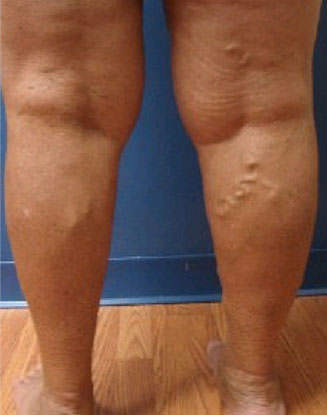
Sí, dado que este es un problema médico que puede tener graves consecuencias para la salud, la mayoría de las compañías de seguros cubren el tratamiento de las venas varicosas. CIGNA es una de las compañías de seguros que no cubre en sus planes de nivel inferior. La mayoría de las compañías de seguros, como los médicos, creen que el tratamiento de las venas varicosas es una necesidad y debe ser atendido de inmediato.
¿Qué tan comunes son las venas varicosas?
Alrededor del 50-55% de las mujeres estadounidenses y el 40-45% de los hombres estadounidenses padecen algún tipo de problema venoso. Las venas varicosas afectan a una de cada dos personas mayores de 50 años.

Muchos factores aumentan las posibilidades de una persona de desarrollar venas varicosas, que incluyen:
La fuerza de la gravedad, la presión del peso corporal y la tarea de transportar sangre desde la parte inferior del cuerpo hasta el corazón hacen que las piernas sean la ubicación principal de las venas varicosas. Soportan la mayor presión. Esta presión puede ser más fuerte que las válvulas unidireccionales de las venas.
Las venas varicosas generalmente se agrandan y empeoran con el tiempo. Las várices severas pueden causar problemas de salud que incluyen:
¿Qué debo hacer si noto uno o más de estos síntomas?
Debido a que los síntomas pueden empeorar, es importante consultar a un médico que se especialice en el tratamiento de las venas varicosas.
En muchas personas, dado que las venas varicosas son un problema crónico, hay varias áreas que deben tratarse. Una vez que las áreas de tratamiento se establecen mediante un examen físico y un estudio de ultrasonido, las venas varicosas se tratan mejor mediante láser o ablación (cierre) por radiofrecuencia de la vena.
La buena noticia sobre el tratamiento actual de las venas varicosas es que es relativamente libre de dolor y puede realizarse en la comodidad del consultorio de un médico. En el pasado, el tratamiento requería una hospitalización y un procedimiento doloroso llamado extracción de venas. Las nuevas técnicas y tecnología han dado lugar al nuevo enfoque de láser y radiofrecuencia que se puede realizar en menos de una hora y volver a ponerte de pie el mismo día.